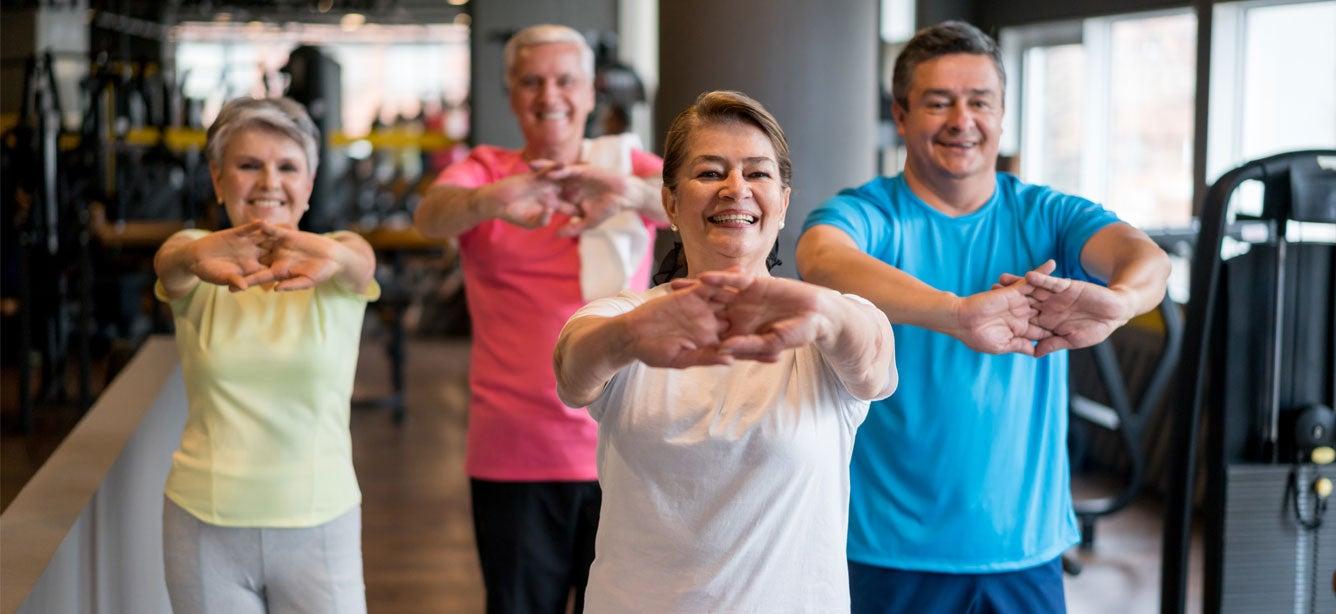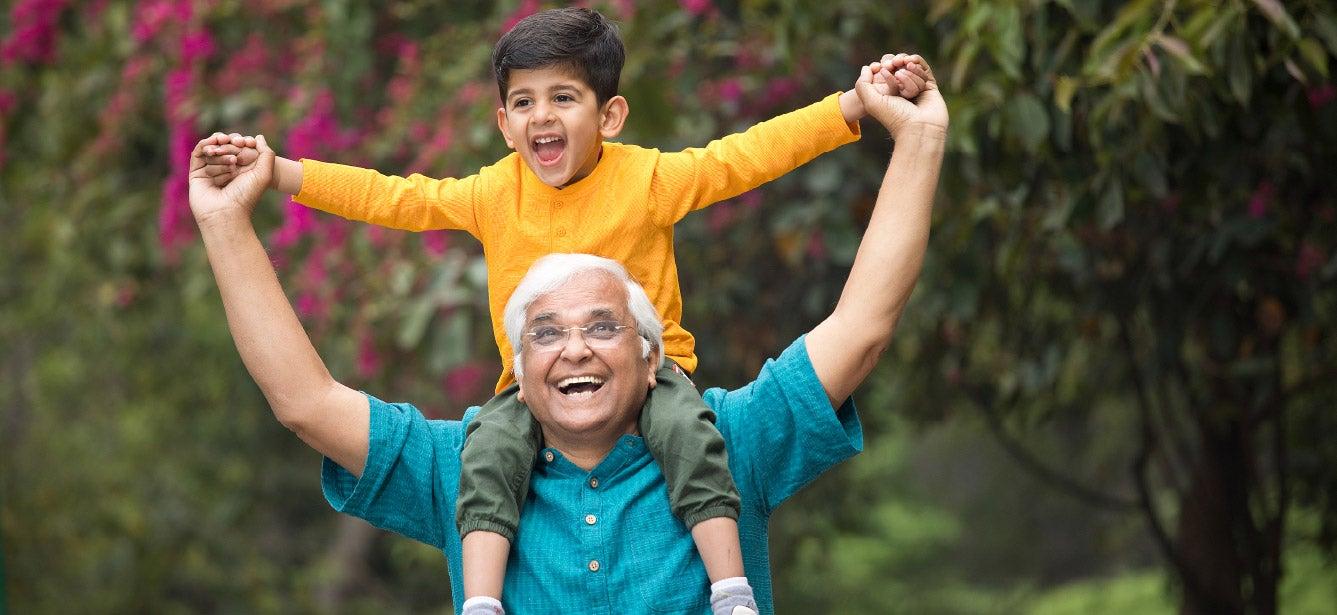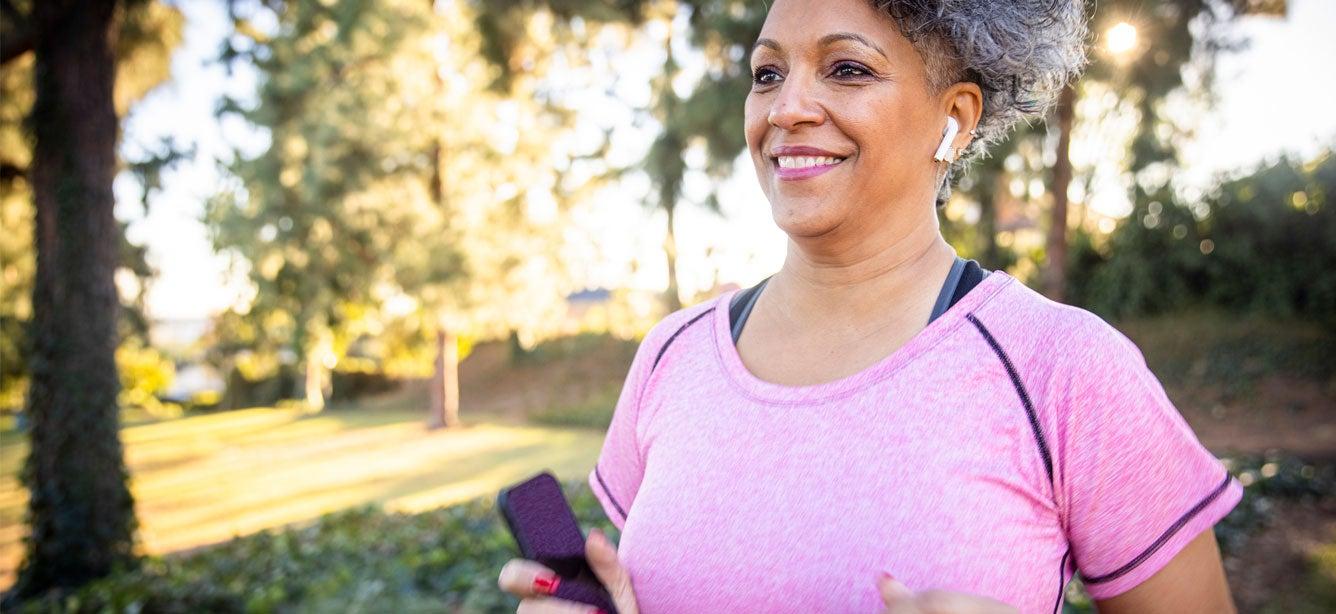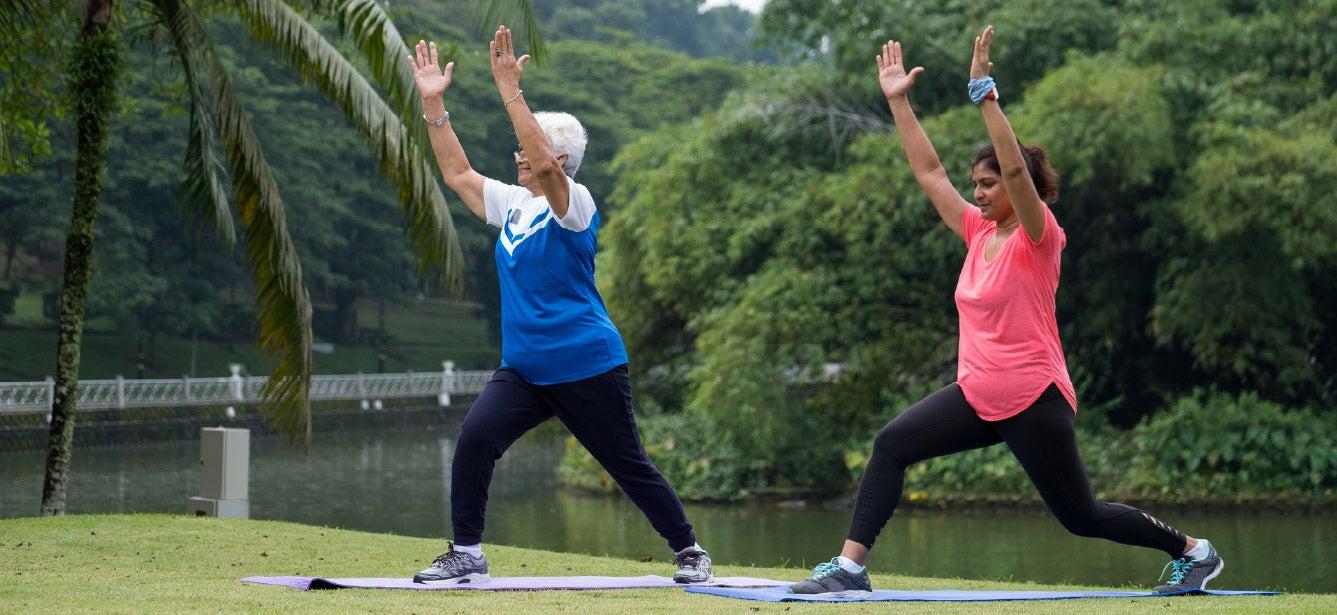
Related Topics
As we age, it's normal to not have the stamina and agility we enjoyed in our younger years. But getting older doesn't have to mean becoming a couch potato.
According to the Centers for Disease Control and Prevention (CDC), all older adults—both men and women—can benefit from regular, moderate physical activity. This is true even for people with medical conditions such as arthritis, heart disease, obesity, and high blood pressure.
What are the benefits of exercise for older adults?
Regular activity can positively impact our physical health as well as our mental and emotional wellbeing. It can help give us more energy and greater self-confidence, enabling us to embrace our later years with gusto.
Some of the key benefits of exercise for older adults include:
Prevents Bone Loss: Both men and women lose bone density as they age, with post-menopausal women losing up to 2% each year. Strength training has been shown to counteract this loss and actually restore bone density. Having stronger bones leads to fewer fractures and can also aid in balance. By reducing the risk of falls and injuries, exercise can help seniors live independently for longer.
Relieves Osteoarthritis Pain: While it may seem counterintuitive, moving more can actually help lessen the pain and stiffness of arthritis. Arthritis-friendly exercise includes low-impact cardiovascular activity, strength training, and range-of-motion exercises. How does exercise help arthritis? It takes pressure off aching joints by strengthening the surrounding muscles. Physical activity may also help ease joint inflammation and aid in lubrication, which reduces pain and stiffness.
Helps Prevent Chronic Disease: Exercise provides a protective effect against a host of chronic illnesses, including cardiovascular disease, colon cancer, diabetes, obesity, and hypertension. If you already have a chronic condition, physical activity can minimize symptoms. It can even help reduce cognitive decline. One study found that participants over the age of 60 showed fewer Alzheimer's disease biomarkers when they performed 30 minutes of exercise every day.
Boosts Immunity: A 2018 study linked moderate exercise with a lower incidence of acute respiratory illness and fewer sick days off of work. The exact way exercise supports immunity is not known. However, there are many theories. Some scientists believe that the anti-inflammatory effects of physical activity enable better immune function. Exercise may also improve the performance of immune cells.
Improves Mood: Simply put, exercise makes us feel good. It can help ease anxiety and depression symptoms, increase relaxation, and create an overall sense of wellbeing. A 2019 study of adult men age 65 and older found that the mood-boosting benefits of exercise continue well into old age, underscoring why it's so vital to stay active.
What exercises are best for older adults?
Ideally, exercise routines for older adults should incorporate a blend of aerobic exercise, strength/resistance training, and stretching/flexibility exercises. Trendy fitness programs and high-intensity regimens aren't a practical—or safe—choice for most older adults. Below are some great workout options that can help you improve your mobility, build strength, and enhance your balance and coordination.
- Yoga: Yoga is a low-impact activity that won't strain your joints. At the same time, it helps you build up your muscles, stabilize your core, improve your flexibility, and strengthen your bones. Look for an introductory yoga class in your area to help you master basic poses. Some yoga programs are specially designed for older adults and include seated and standing options.
- Pilates: Like yoga, Pilates offers an effective workout while being gentle on joints. It focuses on building a strong core in order to improve balance and stability and has been shown to reduce the symptoms of arthritis, multiple sclerosis (MS), and Parkinson's disease. Many of the exercises are performed in sitting or reclining positions. Pilates is a smart option to try if you haven't exercised in a long time.
- Aerobic exercise: Adding endurance activity to your day can help boost cardiovascular function, strengthen lungs and airways, and improve everyday stamina. What counts as aerobic exercise? Walking, swimming, and using the stationary bike are all good choices for older adults. Thirty minutes a day is the recommended amount. This can include three short, 10-minute sessions spread out over the day.
- Strength training: No, we're not talking about bench pressing 100 pounds! There are simple, low-impact bodyweight training exercises you can do at home to help reverse muscle loss and burn body fat. These include wall pushups, stair climbing, squats, and single-leg stands. Some strength-training routines also incorporate light hand weights (1 to 2 lbs.) or resistance bands. Aim for two to three workouts weekly to reap the most benefits.
Make it a group thing: Community exercise programs for older adults
Sometimes exercise is more enjoyable with a friend. If you lack a fitness partner, a community-based program can provide the social connection and motivation you need to stick with it. Exercising in a group setting also provides an added layer of safety for older adults who require more supervision during activity.
Below are examples of senior-centric programs that can help you get active in your community (see program websites for availability in your area):
Fit & Strong is an award-winning, community-based fitness program for older adults, particularly those who suffer from osteoarthritis. Participants not only engage in arthritis-appropriate exercises during this eight-week plan; they also learn helpful tips for managing their arthritis from day to day.
SilverSneakers is a health and fitness program for adults age 65 and older. Covered by some Medicare plans, it helps people stay mobile and active by providing access to gyms and fitness classes designed for older adults. SilverSneakers also offers workout videos, social forums, and other online resources to help seniors exercise from home.
Check with your local senior center or Department on Aging to learn about exercise programs and classes offered where you live.
Is it safe for older adults to exercise?
Most adults over the age of 65 can exercise safely, even those with chronic conditions and mobility challenges. Before starting any exercise regimen, it’s important to talk with your doctor to learn which options are right for your health and activity level. Then, you’ll be ready to experience the proven and immense benefits of exercise firsthand.
This project was supported, in part by grant number 90CSSG0048 from the U.S. Administration for Community Living, Department of Health and Human Services, Washington, D.C. 20201. Grantees undertaking projects under government sponsorship are encouraged to express freely their findings and conclusions. Points of view or opinions do not, therefore, necessarily represent official Administration for Community Living policy.




